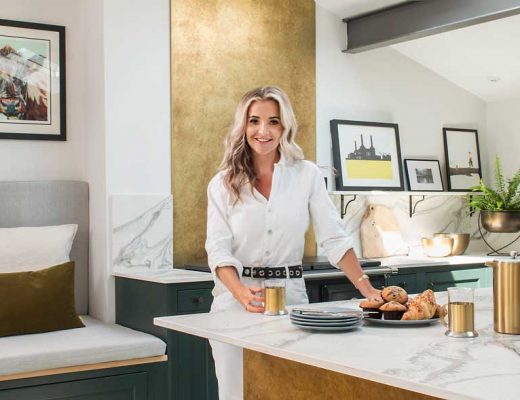Unsure whether adding floor area to your property will really result in a more useable space? Even a little bit of extra footprint can make a difference says MW Architects director and architect Melissa Robinson. Here, she tells us more on how to make a small side extension work…
When creating a compact addition, the key is to think about exactly what you are trying to get from it. The fact that it’s not a large rear design that adds lots of floor area doesn’t automatically limit its worth. As long as a small side extension changes the everyday use of your home for the better, it’s an idea you should not discount.
My team and I find that, with these projects, a lot of our clients are in a ‘weigh-up’ situation between how much space to add and how much garden to lose. We can often find clever ways to find the best of both worlds.
How small can you go?
The smallest extension we have completed only added 7 sq m to the property we were working on. But by rearranging the kitchen, it allowed us to create a designated dining area instead of having to place a table in a space that felt like a corridor.

Smaller extensions can allow you to look at more radical approaches inside the house, for example creating some cut outs between the floors to improve connections between the spaces vertically as well depending on the floor plan.
Small side extension: what you should consider
The important thing is to look at the basic requirements of the space ahead of deciding on anything else. Ask yourself ‘how much kitchen do I actually need?, ‘how many people need to sit at my table?’ and other key questions, and then see if there are clever ways to incorporate these.
Also look at how much storage you realistically need, and how you can smartly create this. Obviously everybody has fluctuations for bigger gatherings at Christmas or for birthdays. But for the majority of the time your home needs to work for far fewer people than on these occasions.

The materials you choose also play a key role. They can help define dedicated areas within smaller extensions that in turn make the overall layout feel bigger – for example by visually separating a dining space from the working kitchen.
The placement of glazing is also important, as connections across the spaces can make a compact room feel bigger.

Finally, smaller extensions often also require less structural works and can be cleverly designed to avoid large walls being removed. Not only does this limit how intrusive the works are, it can also help you keep costs down while still getting a hard-working, efficient new space.
So in short, I would say yes, it’s worth it. Providing that your new space is well planned, adding even a small side-return extension is almost certainly going to be a good solution for you if you want something from the house that you aren’t already getting




